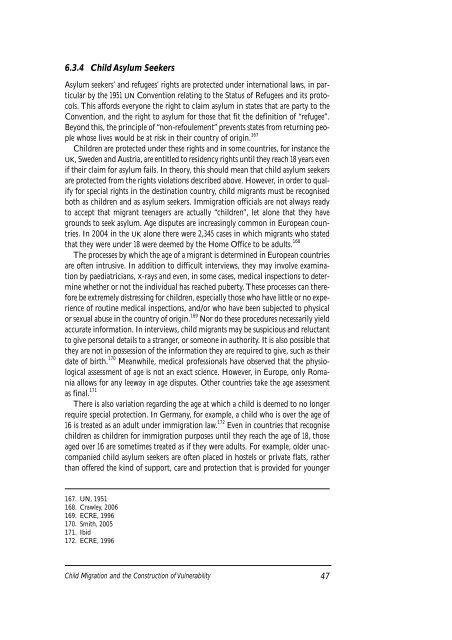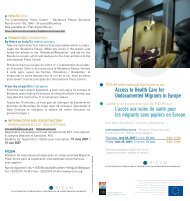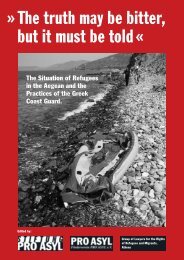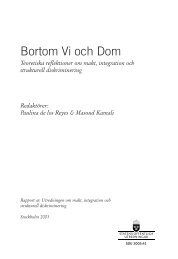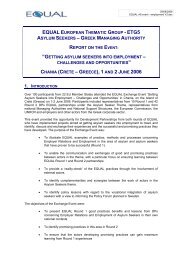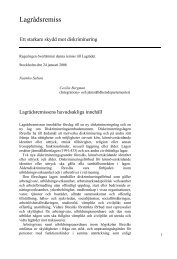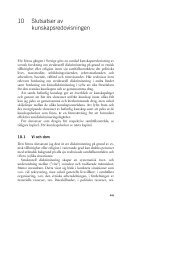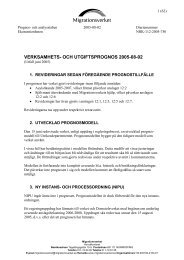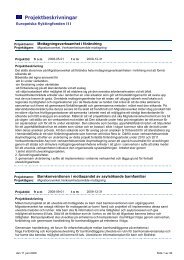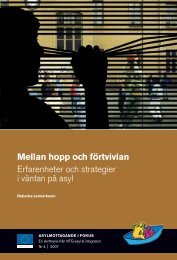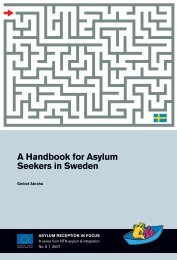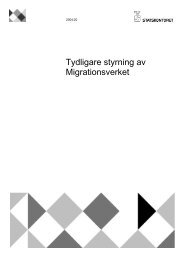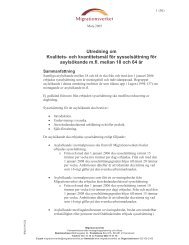and the Construction of Vulnerability - Child Trafficking
and the Construction of Vulnerability - Child Trafficking
and the Construction of Vulnerability - Child Trafficking
Create successful ePaper yourself
Turn your PDF publications into a flip-book with our unique Google optimized e-Paper software.
6.3.4 <strong>Child</strong> Asylum Seekers<br />
Asylum seekers’ <strong>and</strong> refugees’ rights are protected under international laws, in particular<br />
by <strong>the</strong> 1951 UN Convention relating to <strong>the</strong> Status <strong>of</strong> Refugees <strong>and</strong> its protocols.<br />
This affords everyone <strong>the</strong> right to claim asylum in states that are party to <strong>the</strong><br />
Convention, <strong>and</strong> <strong>the</strong> right to asylum for those that fit <strong>the</strong> definition <strong>of</strong> “refugee”.<br />
Beyond this, <strong>the</strong> principle <strong>of</strong> “non-refoulement” prevents states from returning people<br />
whose lives would be at risk in <strong>the</strong>ir country <strong>of</strong> origin. 167<br />
<strong>Child</strong>ren are protected under <strong>the</strong>se rights <strong>and</strong> in some countries, for instance <strong>the</strong><br />
UK, Sweden <strong>and</strong> Austria, are entitled to residency rights until <strong>the</strong>y reach 18 years even<br />
if <strong>the</strong>ir claim for asylum fails. In <strong>the</strong>ory, this should mean that child asylum seekers<br />
are protected from <strong>the</strong> rights violations described above. However, in order to qualify<br />
for special rights in <strong>the</strong> destination country, child migrants must be recognised<br />
both as children <strong>and</strong> as asylum seekers. Immigration <strong>of</strong>ficials are not always ready<br />
to accept that migrant teenagers are actually “children”, let alone that <strong>the</strong>y have<br />
grounds to seek asylum. Age disputes are increasingly common in European countries.<br />
In 2004 in <strong>the</strong> UK alone <strong>the</strong>re were 2,345 cases in which migrants who stated<br />
that <strong>the</strong>y were under 18 were deemed by <strong>the</strong> Home Office to be adults. 168<br />
The processes by which <strong>the</strong> age <strong>of</strong> a migrant is determined in European countries<br />
are <strong>of</strong>ten intrusive. In addition to difficult interviews, <strong>the</strong>y may involve examination<br />
by paediatricians, X-rays <strong>and</strong> even, in some cases, medical inspections to determine<br />
whe<strong>the</strong>r or not <strong>the</strong> individual has reached puberty. These processes can <strong>the</strong>refore<br />
be extremely distressing for children, especially those who have little or no experience<br />
<strong>of</strong> routine medical inspections, <strong>and</strong>/or who have been subjected to physical<br />
or sexual abuse in <strong>the</strong> country <strong>of</strong> origin. 169 Nor do <strong>the</strong>se procedures necessarily yield<br />
accurate information. In interviews, child migrants may be suspicious <strong>and</strong> reluctant<br />
to give personal details to a stranger, or someone in authority. It is also possible that<br />
<strong>the</strong>y are not in possession <strong>of</strong> <strong>the</strong> information <strong>the</strong>y are required to give, such as <strong>the</strong>ir<br />
date <strong>of</strong> birth. 170 Meanwhile, medical pr<strong>of</strong>essionals have observed that <strong>the</strong> physiological<br />
assessment <strong>of</strong> age is not an exact science. However, in Europe, only Romania<br />
allows for any leeway in age disputes. O<strong>the</strong>r countries take <strong>the</strong> age assessment<br />
as final. 171<br />
There is also variation regarding <strong>the</strong> age at which a child is deemed to no longer<br />
require special protection. In Germany, for example, a child who is over <strong>the</strong> age <strong>of</strong><br />
16 is treated as an adult under immigration law. 172 Even in countries that recognise<br />
children as children for immigration purposes until <strong>the</strong>y reach <strong>the</strong> age <strong>of</strong> 18, those<br />
aged over 16 are sometimes treated as if <strong>the</strong>y were adults. For example, older unaccompanied<br />
child asylum seekers are <strong>of</strong>ten placed in hostels or private flats, ra<strong>the</strong>r<br />
than <strong>of</strong>fered <strong>the</strong> kind <strong>of</strong> support, care <strong>and</strong> protection that is provided for younger<br />
167. UN, 1951<br />
168. Crawley, 2006<br />
169. ECRE, 1996<br />
170. Smith, 2005<br />
171. Ibid<br />
172. ECRE, 1996<br />
<strong>Child</strong> Migration <strong>and</strong> <strong>the</strong> <strong>Construction</strong> <strong>of</strong> <strong>Vulnerability</strong><br />
47


